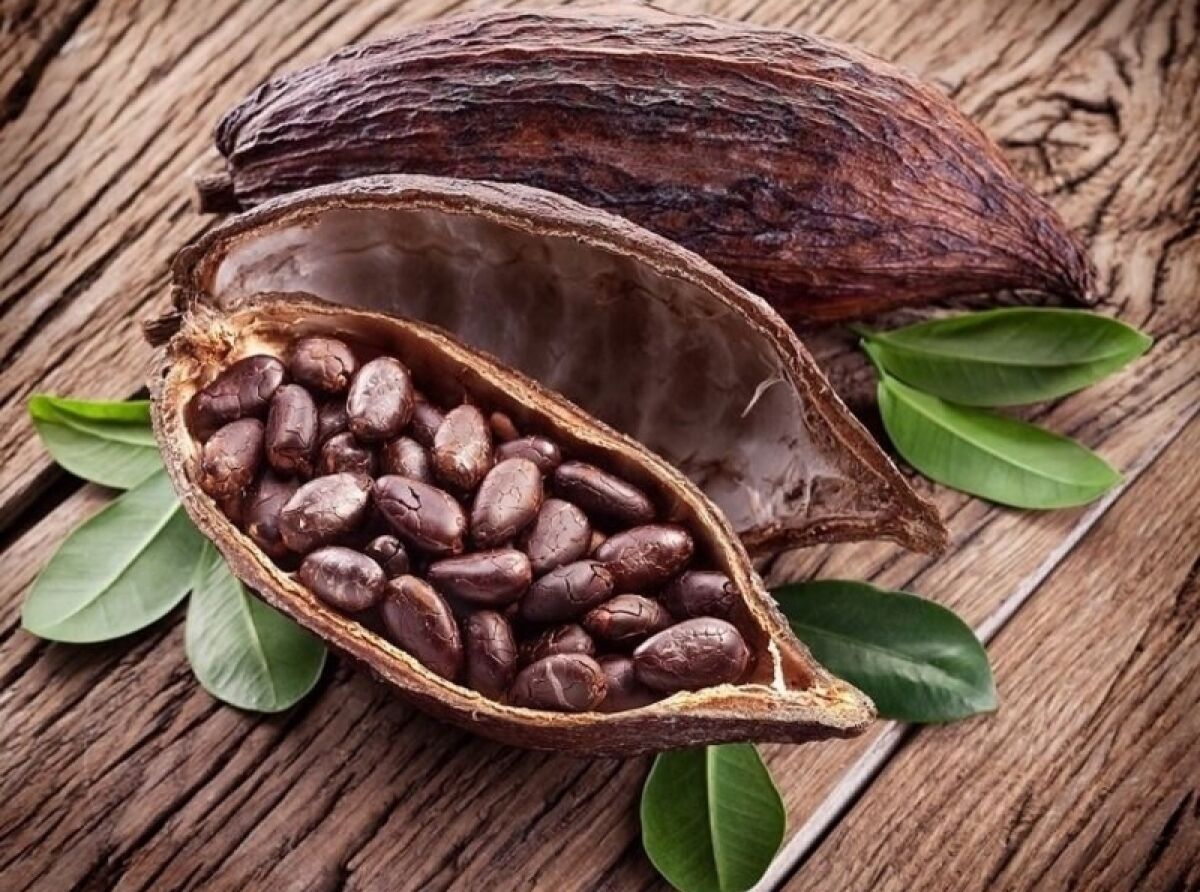Chocolate has been enjoyed by people of the Mesoamerican region for thousands of years. Around 1500 B.C. the Olmec, the first great civilization of present-day Mexico, discovered cacao.
Cacao trees are natural to the region, and at that time were unknown to the rest of the world. The Olmec did not leave written records, but traces of what was probably a chocolaty drink have been found on ancient Olmec pottery. It is thought that originally the drink may have been made from just from the pulp surrounding the cacao beans, and over time they learned to ferment, roast, and grind the beans to make a drink much like coffee of today. The chocolate drink was served in special round jars called tecomates, and was used in rituals and sometimes as medicine. It was not sweetened, and would have been quite bitter.
The Mayans were next to adopt chocolate into their culture, calling it the drink of the gods. They added chilies, cornmeal, and other spices, and poured it from one cup to another until it became a frothy mix they called xocolatl, which means bitter water. The Mayans also had a special cylindrical vessel for drinking chocolate, often marked along the rim to indicate its’ use.

Mayan chocolate drinking vessel
The Aztecs believed that chocolate was a gift from their god, Quetzalcoatl. They valued cacao beans so greatly they used them as currency. The Aztecs did have written language, and records have been found that one bean would buy you one tomato, 30 beans would buy a rabbit, and for 200 beans you could buy a turkey. In fact, in Mexico the hand sign for money is a semi-clutched hand, and refers back to when a cacao pod would have been in that hand.
In the year 1519, 50 golden bowls of chocolatl, as the Aztecs called it, were offered to Hernan Cortes in the Aztec court by Emperor Montezuma. Cortes did not like the bitter drink, but was fascinated by how it was valued in the Aztec culture. It was then introduced in Spain and though still served as a drink, began to be sweetened to offset the bitter taste. The Spanish kept it to themselves for about a hundred years before it was brought to France, and then on to Britain. By this time it had become so popular that cacao trees were being grown on plantations back in the Americas, which was Spanish territory. The British, Dutch, and French started their own plantations in other parts of the world including the West Indies and Africa, where most of the world’s cacao trees are grown today. However in these regions a lower quality variety of cacao is used because it is easier to grow.

Enjoying hot chocolate in the 18th century
It was not until the mid-1800’s that chocolate as we know it today started being produced. Until then, it was still consumed as a drink. But in 1828 the cocoa press was invented, separating the cacao butter from cacao bean nibs, leaving a cakey substance that could then be pulverized into cocoa powder, a much more usable product. Cocoa powder could easily be mixed with other ingredients to make a variety of chocolate goodies. The first chocolate bar was produced in 1847 by Joseph Fry, who discovered that moldable chocolate could be made by adding cacao butter back into the cocoa powder.
Belgium soon became known for its’ fine chocolates from the Jean Neuhaus chocolate shop, which is still open in Brussels today. It was here that pralines, or bonbons, were invented, and the ballotin chocolate box began to be used to protect the candies from being crushed. By this time chocolatiers engaged the conching process, which slowly refines the chocolate to a very fine, smooth texture. Belgian chocolate making and technology have continued to improve to this day, leading the world in chocolate making tools and machinery.

Chocolate pralines hand-created by Cacao Magico
The current trend in the chocolate industry is a strive for high-quality handmade chocolates made from sustainably grown cacao beans. Mexican cacao farmers are at the forefront of this movement, seeking to reestablish Mexico as a top-grade producer. Conservation International and the Autonomous University of Chiapas have been working with farmers to improve production, educating farmers and students on better and more sustainable growing and harvesting methods. Their goal is to double Mexican cacao production over the next three years.
Locally, Master Chocolatier Mario Ramirez, Oliver Applegate, and Dean and Mitch Regehr of Cacao Magico are experimenting with their own cacao trees. They have brought in trees right here to Puerto Vallarta from all over Mexico, each having different flavor characteristics. Though most of the trees are still several years from maturity, the idea is to farm their own cacao pods for the production of their chocolate, and to be able to offer naturally differing flavors.

Cacao pods freshly picked by Master Chocolatier Mario Ramirez
Cacao Magico makes all their own chocolates by hand, using only the highest quality cacao powder from Mexican cacao nibs, soon to be their own. Their kitchen equipment consists of the finest Belgian chocolate making machinery. Their gorgeous showroom displays a historical timeline of the story of chocolate, which they will tell you all about during one of their Chocolate Experience interactive kitchen tours. Next time you go to Puerto Magico, our new cruise ship terminal, you can watch them create their masterpieces through a glass wall looking directly into the kitchen. Then come in and try one, and experience for yourself the freshly made, smooth and deliciously rich taste of one of Mexico’s True Treasures!!


